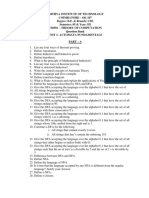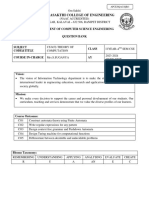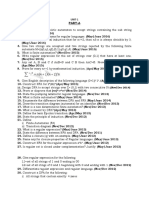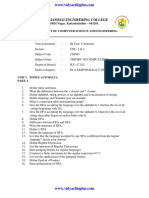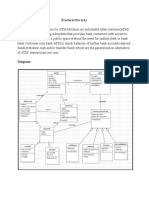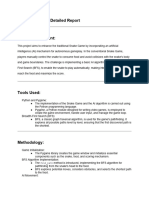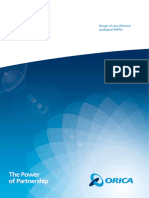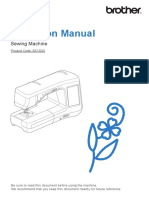0% found this document useful (0 votes)
77 views3 pagesAT Expected Questions
The document contains 13 long questions and 15 short questions related to automata theory. The questions cover topics such as defining DFAs and NFAs, distinguishing between different types of automata, designing automata for various languages, epsilon closures, regular expressions, context-free grammars, parsing, ambiguity, pumping lemma, and minimizing DFAs.
Uploaded by
hegica6739Copyright
© © All Rights Reserved
We take content rights seriously. If you suspect this is your content, claim it here.
Available Formats
Download as PDF, TXT or read online on Scribd
0% found this document useful (0 votes)
77 views3 pagesAT Expected Questions
The document contains 13 long questions and 15 short questions related to automata theory. The questions cover topics such as defining DFAs and NFAs, distinguishing between different types of automata, designing automata for various languages, epsilon closures, regular expressions, context-free grammars, parsing, ambiguity, pumping lemma, and minimizing DFAs.
Uploaded by
hegica6739Copyright
© © All Rights Reserved
We take content rights seriously. If you suspect this is your content, claim it here.
Available Formats
Download as PDF, TXT or read online on Scribd
/ 3







